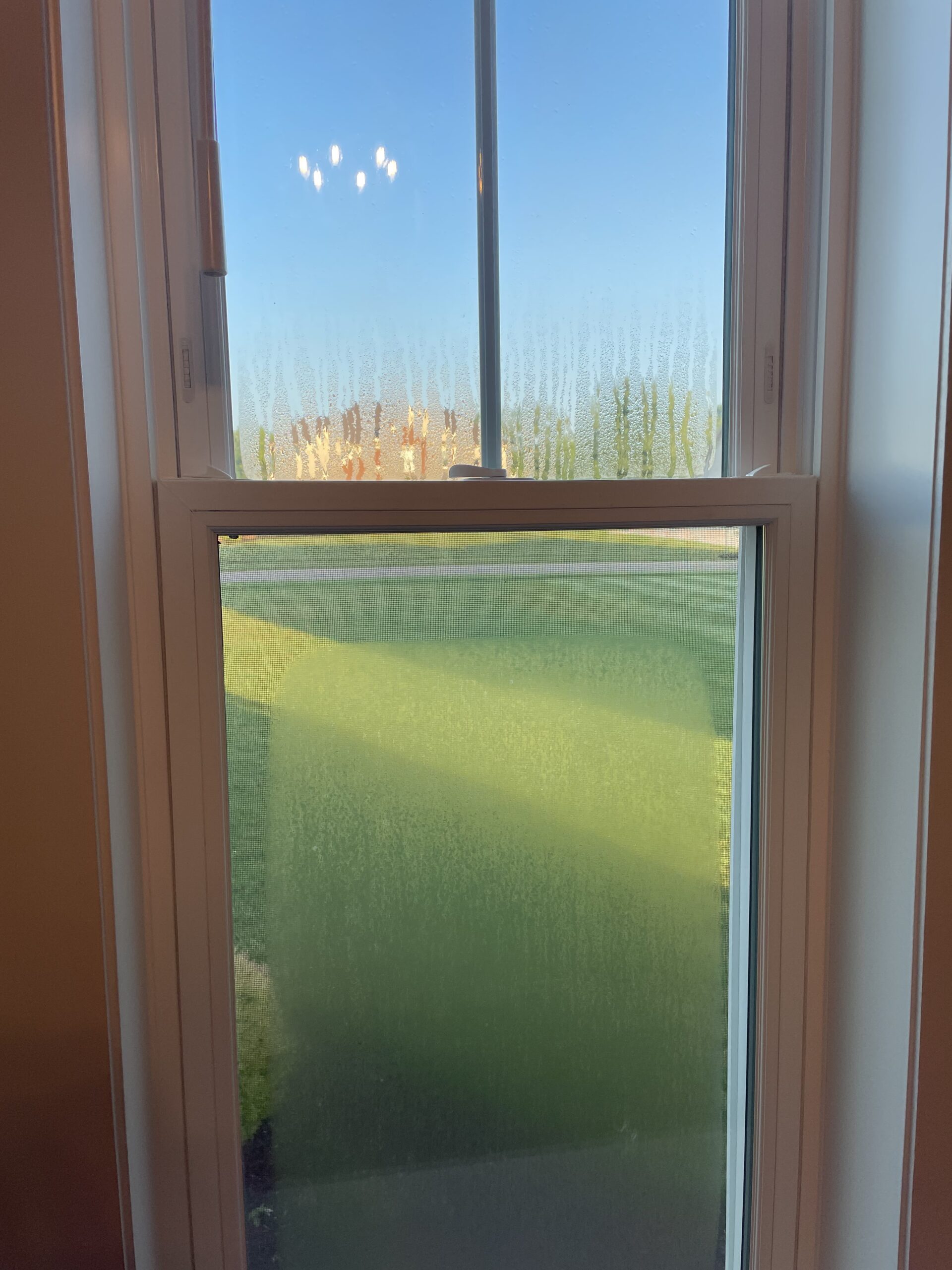Can I get Condensation on my new windows?
Energy efficient windows can dramatically reduce some of the causes of condensation. For example, they can reduce temperature conduction which is the main cause of interior condensation. However, condensation likes still air, so if your new windows are more airtight than your old windows, it’s possible you may see some condensation in an area that didn’t have it before. All windows can get condensation depending on humidity levels and temperatures on the interior and exterior of the property. Window treatments, humidifiers, dehumidifiers, sinks, showers, etc… can also have a big impact on how much condensation occurs and how long it stays. Since nighttime is colder than day you may see more condensation first thing in the morning, especially if you have high humidity in your home. Window treatments that are closed at night trap the cold air and moisture against the glass which can increase condensation. In extreme cold temperatures, if conditions are just right, condensation can actually freeze.
Why is Interior Condensation primarily at the bottom edge of the glass?
We have a non-metallic “Super Spacer” option that helps to reduce condensation along the perimeter of the glass but even a “Super Spacer” can still get interior condensation which typically forms first at the bottom edge of the glass. This is because cold can conduct more along the edge of the glass than the center and air with moisture is heavier than air without moisture so it will make its way as low as it can go then it condenses against the glass where it is coldest.
What is Exterior Condensation?
Exterior condensation or “reverse condensation” is just morning dew on your windows. It typically peaks around 6am and is usually gone by 9am. To get reverse condensation the exterior surface of the glass has to drop below dew point. If the property is 70 degrees inside and has single pane windows or inefficient windows the warm temperature inside the property transfers through the glass and prevents the exterior glass surface from dropping below dew point. On the other hand, efficient windows don’t let the warm interior temperature transfer through the glass due to the Low-E coatings so the exterior glass surface may drop below dew point, allowing morning dew to accumulate temporarily. So, as strange as it sounds, morning dew on the exterior of your windows is actually a sign you have energy efficient windows.
Why is Exterior Condensation mostly at the center of the glass & not on all windows?
Temperature conduction is higher along the perimeter of the glass so exterior condensation will usually form first towards the center of the glass when it drops below dew point. It’s also common to get exterior condensation on the top sash but little to none on the bottom sash. This is because the bottom sash is recessed in and covered with a screen. Many variables can affect which windows get it and which don’t, it’s not uncommon to see two windows that are very close to each other and one has it at that moment but the other does not. This may be due to the direction of the breeze, the sunrise, nearby foliage, nearby wall, an overhang or some other factor.
Is something wrong with my windows?
If moisture is permanently trapped in between the panes and not on the exterior or interior of the property then that may be “Seal Failure” which is covered by the warranty. Condensation on the interior or exterior is normal when conditions are right. If interior condensation is excessive the best thing to do is adjust humidity levels in your home. Please contact us if you have any more questions, thank you!
Reverse Condensation

Interior Condensation

